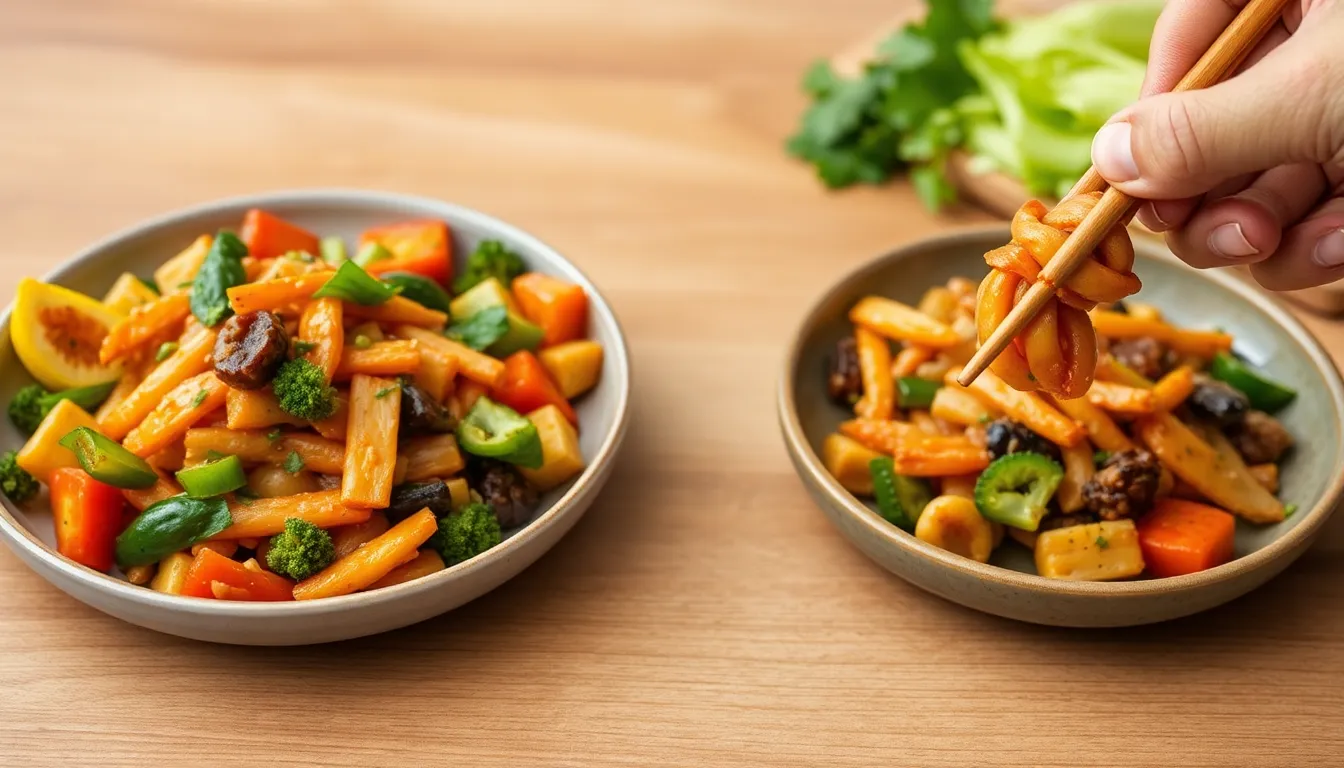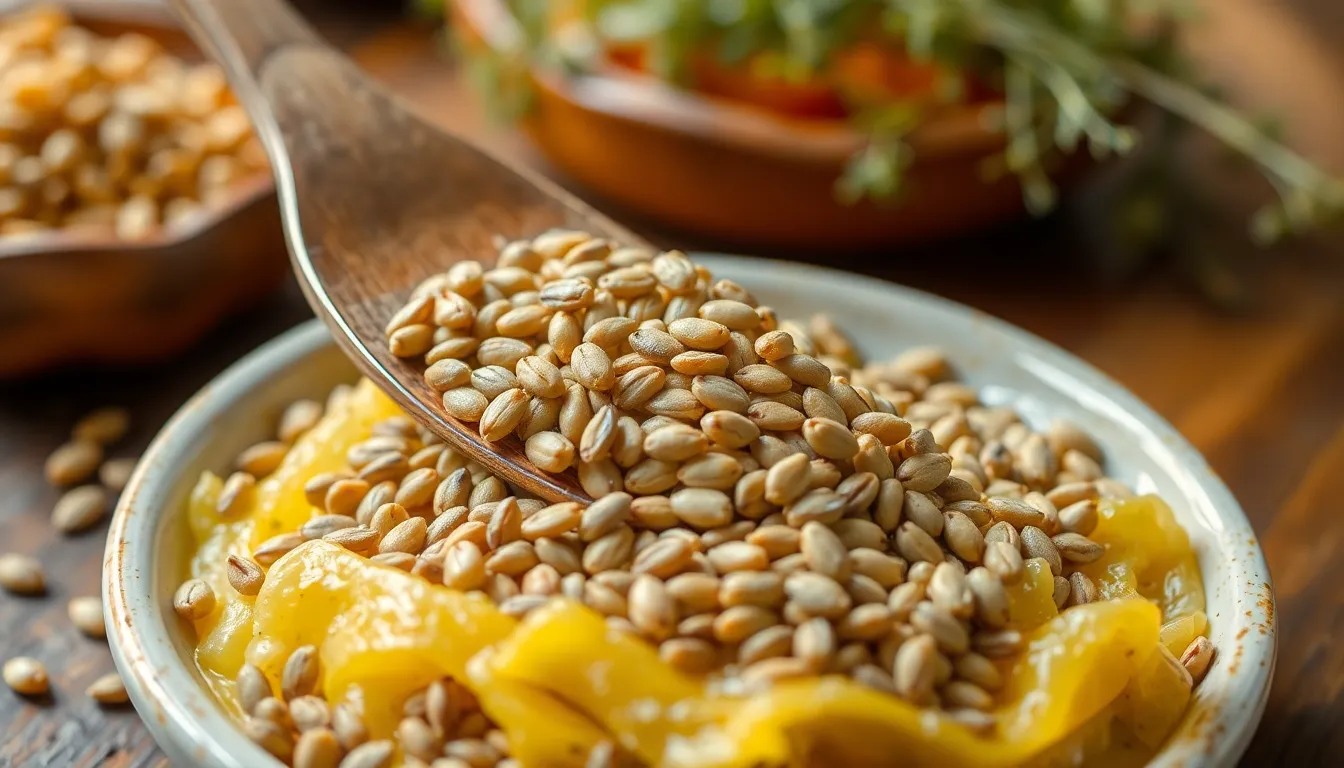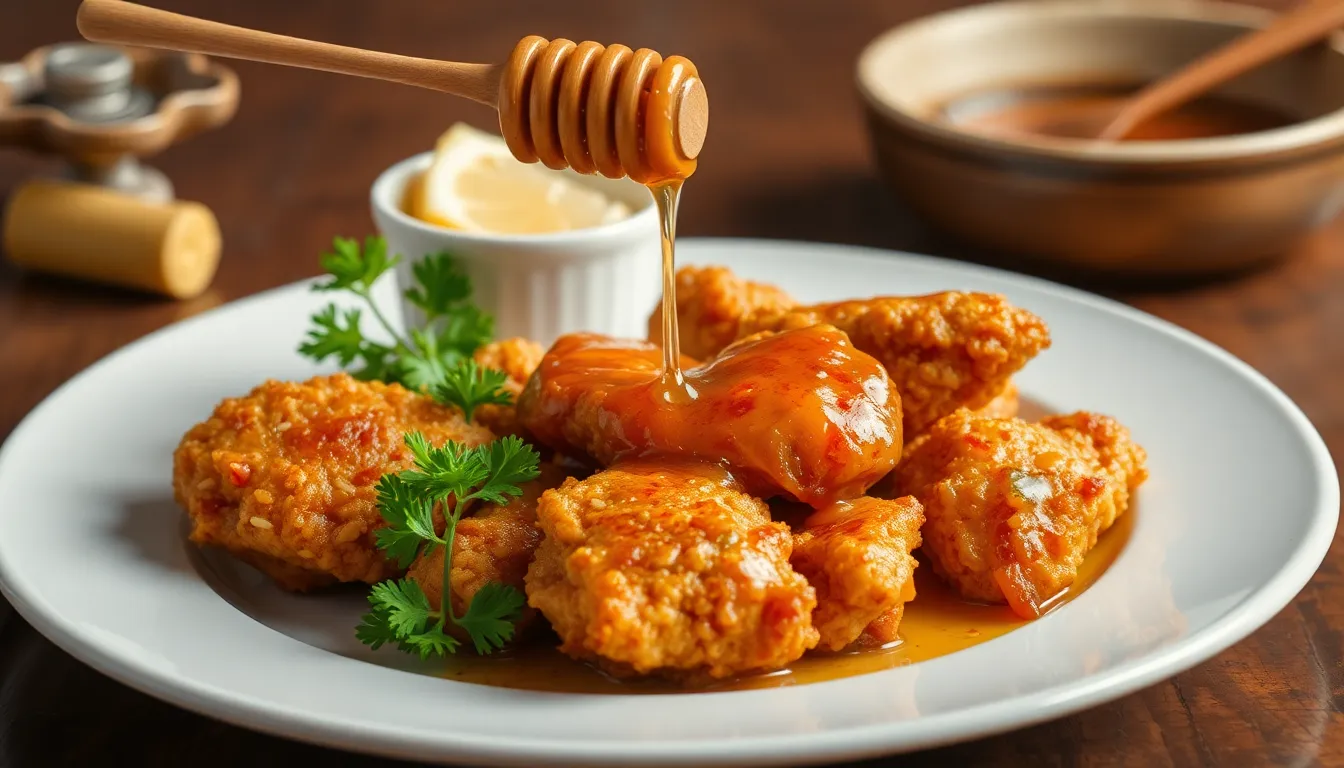Stir-Fry for the Busy Professional: Quick Lunch Ideas
In the hustle and bustle of a busy professional life, finding time to prepare a healthy lunch can often feel like an impossible task. The demands of work, meetings, and deadlines can leave little room for cooking. Enter stir-fry—an incredibly appealing option for those short on time yet eager to enjoy a nutritious meal. With its quick cooking time and endless possibilities for customization, stir-fry is the perfect solution for busy professionals looking for quick, healthy lunch ideas. In this article, we will explore the benefits of stir-fry, essential ingredients, quick recipes, meal prep tips, cooking techniques, and international variations to keep your lunch exciting!
Section 1: Why Stir-Fry?
Subsection 1.1: Nutritional Benefits
Stir-frying is not only about speed; it’s also a wonderful way to pack in nutrients. Here are some key nutritional benefits of stir-frying:
- Retention of Nutrients: The quick cooking method preserves the vitamins and minerals in vegetables.
- Balanced Meal: Stir-fries usually include a balance of protein, vegetables, and carbohydrates, making them a well-rounded meal.
- Low in Fat: This method often requires minimal oil, especially when using non-stick pans or woks, making it a healthier option.
Subsection 1.2: Versatility and Customization
One of the greatest attractions of stir-fry is its versatility. Here’s why:
- Endless Combinations: You can mix and match proteins, vegetables, and sauces based on your taste preferences and dietary restrictions.
- Use of Leftovers: A perfect way to use up leftover proteins and vegetables from other meals.
- Vegetarian and Vegan Options: Tofu and tempeh are excellent substitutes for meat, making stir-frying accessible to all dietary needs.
Section 2: Essential Ingredients for Quick Stir-Fry
Subsection 2.1: Proteins
Here’s a list of quick-cooking proteins you can use in your stir-fry:
- Chicken (thinly sliced)
- Shrimp (peeled and deveined)
- Tofu (firm, cubed)
- Beef (thinly sliced, such as flank or sirloin)
- Tempeh (cubed)
Subsection 2.2: Vegetables
Consider these quick-cooking vegetable options for a colorful and nutritious stir-fry:
- Bell peppers (sliced)
- Broccoli (florets)
- Snap peas
- Zucchini (sliced)
- Carrots (julienned)
- Green onions (chopped)
Subsection 2.3: Sauces and Seasonings
A good stir-fry isn’t complete without flavorful sauces. Here are some suggestions:
| Ready-Made Sauces | Quick Homemade Options |
|---|---|
| Teriyaki Sauce | 2 tbsp soy sauce + 1 tbsp honey + 1 tsp sesame oil |
| Sweet and Sour Sauce | 2 tbsp ketchup + 1 tbsp vinegar + 1 tbsp sugar |
| Garlic Sauce | 2 tbsp soy sauce + 1 tbsp minced garlic + 1 tsp ginger |
Subsection 2.4: Carbohydrates
For a satisfying meal, choose a base for your stir-fry:
- Rice (white or brown)
- Noodles (rice noodles or egg noodles)
- Quinoa
- Couscous
Section 3: Quick Stir-Fry Recipes
Subsection 3.1: Recipe 1 – Chicken and Broccoli Stir-Fry
Ingredients:
- 1 lb chicken breast, sliced
- 2 cups broccoli florets
- 2 tbsp soy sauce
- 1 clove garlic, minced
- 1 tbsp vegetable oil
Instructions:
- Heat oil in a wok over medium-high heat.
- Add garlic and chicken; stir-fry until chicken is golden.
- Add broccoli and soy sauce; stir-fry until broccoli is tender.
- Serve over rice.
Subsection 3.2: Recipe 2 – Shrimp and Snap Pea Stir-Fry
Ingredients:
- 1 lb shrimp, peeled and deveined
- 2 cups snap peas
- 2 tbsp teriyaki sauce
- 1 tbsp sesame oil
Instructions:
- Heat sesame oil in a wok over medium-high heat.
- Add shrimp and cook until pink; remove from the pan.
- Add snap peas and teriyaki sauce; stir-fry until peas are tender.
- Return shrimp to the pan, mix well, and serve over noodles.
Subsection 3.3: Recipe 3 – Tofu and Mixed Vegetables Stir-Fry
Ingredients:
- 1 block firm tofu, cubed
- 2 cups mixed vegetables (carrots, bell peppers, and zucchini)
- 2 tbsp soy sauce
- 1 tbsp ginger, minced
- 1 tbsp olive oil
Instructions:
- Heat oil in a wok; add tofu and cook until golden on all sides.
- Add ginger and mixed vegetables; stir-fry until vegetables are tender.
- Add soy sauce and stir-fry for an additional minute.
- Serve over quinoa or brown rice.
Section 4: Meal Prep Tips for Busy Professionals
Subsection 4.1: Prepping Ingredients in Advance
Preparation is key for busy professionals. Here are some tips:
- Spend some time on weekends chopping vegetables and marinating proteins.
- Store prepped ingredients in clear, labeled containers in the fridge.
- Consider using a mandoline slicer for faster vegetable prep.
Subsection 4.2: Batch Cooking
Cooking large portions can save you precious time during the week:
- Make multiple servings of your favorite stir-fry and store them in individual containers.
- Use different sauces to change the flavor profile while using the same base ingredients.
- Freeze portions that you won’t eat within a few days for later use.
Subsection 4.3: Storage Solutions
To ensure your meals stay fresh:
- Use airtight containers to store cooked stir-fry.
- Label containers with the date to keep track of freshness.
- Store carbohydrates separately to prevent sogginess.
Section 5: Quick Stir-Fry Cooking Techniques
Subsection 5.1: The Perfect Stir-Fry Technique
Achieving the ideal stir-fry requires a few simple steps:
- Prep all ingredients before you start cooking to ensure a smooth flow.
- Heat the wok or pan until hot before adding oil.
- Add proteins first, as they take longer to cook, followed by vegetables.
- Keep the ingredients moving in the pan to avoid burning.
- Finish with sauce, allowing it to coat the ingredients evenly.
Subsection 5.2: Equipment Recommendations
Having the right tools can significantly speed up the stir-frying process:
- Wok: Ideal for high-heat cooking and allows for even distribution of heat.
- Spatula: A broad spatula is useful for tossing ingredients effectively.
- Cutting Board and Sharp Knife: Essential for quick and efficient ingredient prep.
Section 6: Stir-Fry Variations Around the World
Subsection 6.1: Asian-Inspired Stir-Fry
Stir-frying has its roots in Asian cuisine, with each country offering its unique spin:
- Chinese Stir-Fry: Often features soy sauce, garlic, and a mix of seasonal vegetables.
- Thai Stir-Fry: Incorporates ingredients like basil and chili for a spicy kick.
- Japanese Stir-Fry: May include teriyaki sauce and sesame oil, often served with rice.
Subsection 6.2: Western-Style Stir-Fry
Western interpretations of stir-fry can be just as delicious:
- Italian Stir-Fry: Incorporates ingredients like pasta, olive oil, and Italian herbs.
- Mexican Stir-Fry: Features spices, beans, and corn, served with tortillas.
- American Stir-Fry: Often includes barbecued meat and a variety of vegetables.
In conclusion, stir-frying is a fantastic cooking technique that allows busy professionals to create healthy, delicious meals quickly and efficiently. With the right ingredients, meal prep strategies, and cooking techniques, you can master the art of stir-fry and keep your lunch options exciting. Enjoy experimenting with different flavors and textures, and make stir-frying a staple of your culinary repertoire!




